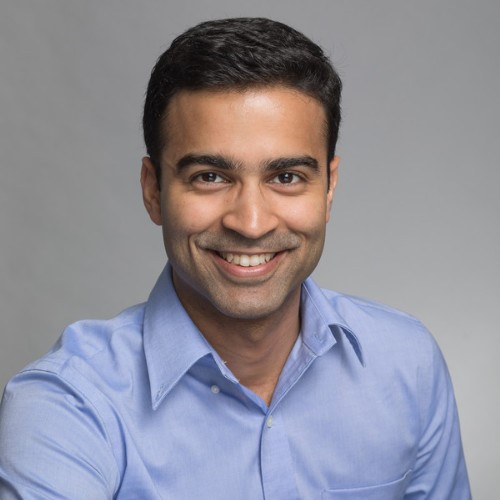The rush to artificial intelligence (AI) has made one thing clear: Successfully adopting emerging technologies can mean the difference between leading your industry and being overtaken by more agile competitors. Abhishek Nanda, a Harvard Business School graduate and CFO at SVAM International, brings a wealth of experience across domains such as ESG, IT, and pharmaceutical software. With over $1.5 billion in equity investments guided, he offers other leaders strategic insights on integrating AI, automation, cloud computing, and zero trust architecture (ZTA) into the modern IT stack—without sacrificing financial goals or long-term growth.

AI and Automation: Tools for Sustainable Growth
AI has proven to be a catalyst for operational efficiency and revenue growth—but only when applied thoughtfully. Nanda emphasizes that these technologies must be integrated in a way that creates value without disrupting established, sustainable practices. Rushing into AI adoption without a clear plan can be counterproductive. At SVAM, AI is paired with Robotic Process Automation (RPA) and Mobile Force Automation. These solutions are designed to streamline high-volume tasks, automate rote decision-making, and ultimately free up valuable resources for less mechanically intensive strategic initiatives.
“Regardless of where you apply them, your AI and automation should be expected to deliver measurable returns,” Nanda advises. To ensure these technologies are contributing to the bottom line, he advocates for clear KPIs tailored to each implementation. For AI, this could involve tracking improvements in decision-making speed, accuracy in predictive analytics, or customer satisfaction metrics. With RPA, KPIs often focus on reductions in process cycle times, error rates, and operational costs. Regularly monitoring and adjusting these KPIs helps keep AI and automation initiatives aligned with evolving business needs and market conditions.
Cloud Computing: Building for Flexibility and Cost Efficiency
With overhead costs for on-site servers rising, cloud computing has become a basic need for companies seeking scalability. However, Nanda warns that cloud adoption should be approached with a clear understanding of its cost implications. With over 80% of container spend wasted on idle cloud resources, companies often overestimate their needs, creating unnecessary financial strain. “Cloud adoption should be driven by a clear understanding of how it’s used, how often, and the company’s expected growth,” he explains. “Rarely does an off-the-shelf enterprise plan match a company’s needs.”
Nanda recommends exploring hybrid cloud environments, combining the cost benefits of public clouds with the administrative security of private clouds. This approach optimizes IT spending, using public infrastructure for non-sensitive workloads and private clouds for business-critical operations. He also advocates for Infrastructure as Code (IaC) to automate cloud deployments, reducing over-provisioning risks and maximizing resource efficiency.
For companies concerned about upfront costs, Nanda suggests exploring financing options like capital leasing or pay-as-you-go models, which align expenses with cash flow. He explains that aligning cloud expenses with actual revenue cycles, rather than with projected needs, fosters a more balanced relationship with cloud providers.
Nearshoring & Offshoring: Resource Allocation Around the World
SVAM International’s Correct ShoreSM Global Delivery Model represents the future of strategic resource allocation. “Leading organizations have already normalized hybrid work models,” says Nanda. “Strategically distributing a workforce offers access to a much larger talent pool at incredibly competitive price points, no matter where you’re based.”
Nanda’s strategy involves assessing a project’s specific requirements and assigning a tailored geographic allocation of resources. A project requiring close collaboration with U.S.-based teams might benefit from nearshoring to Mexico for overlapping hours, while large-scale data processing tasks could be more cost-effectively handled offshore in India, where the booming data center market is projected to be worth $10 billion by 2027. By blending nearshoring and offshoring, companies can achieve a balanced approach that exceeds the availability and market constraints of a business’s operating sphere.
Cybersecurity: A Necessary Investment in Risk Management
Data breaches can have catastrophic consequences, with the global average cost now soaring to $4.88 million per breach. Cybersecurity isn’t just an IT concern—it’s a fundamental business necessity. Nanda underscores the importance of adopting Zero Trust Architecture, which, unlike traditional ‘perimeter defenses,’ operates on the principle of “trust nothing, verify everything.” ZTA continuously authenticates requests to sensitive data and systems, reducing a business’s attack surface with strict access controls.
ZTA also enhances real-time threat detection, enabling even smaller security teams to isolate potential breaches effectively. This approach is particularly valuable in today’s remote and hybrid work environments, where secure access to resources from any location is critical. By integrating ZTA, SVAM International builds a resilient IT infrastructure that meets regulatory compliance and also stays ahead of evolving threats.
Strategic Leadership in IT
Nanda’s insights offer a roadmap for leaders looking to integrate emerging technologies into their organizations, while avoiding the costly mistakes of rushed, one-size-fits-all solutions. “Innovation is key to staying competitive, but it always comes at an expense,” Abhishek advises. “My goal is to help leaders make smart technology decisions that strengthen their financial future.”
